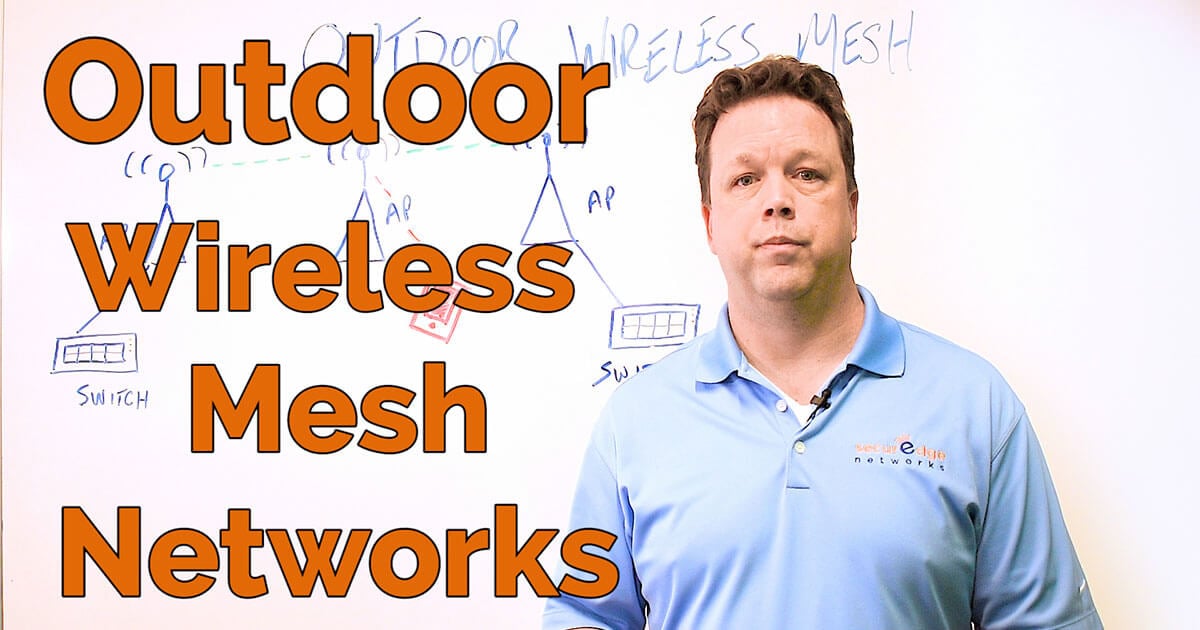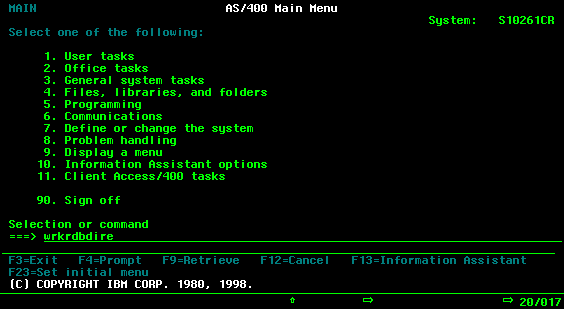Our VP of Engineering, Michael McNamee, discusses the importance of outdoor wireless mesh networks and how to properly incorporate them into your network.
Key Takeaways
- Outdoor WiFi takes a specialized skillset
- Wireless mesh is a solution comprised of access points where some are wired into the network and others have no wire only power
- Mesh makes it possible to provide data connectivity wirelessly to areas that need access for security cameras, access controls, emergency services as well as control automation.
- Wireless mesh is not such a great solution for indoor environments
- Only a certain number of hops are actually feasible with wireless mesh.
- Starting out with a poor wireless design and improper application is a risk for potential financial loss and a bad user experience.
Video Transcript
Hello SecurEdge fans, and welcome to another edition of our Whiteboard Wednesdays. This week we’re talking about wireless mesh networks, what are they and when should they be used?
Outdoor wireless is a much different challenge compared to more traditional indoor wireless networks. It takes a different skill set and a very specific understanding of designing wireless for large outdoor spaces. We get questions about outdoor networks all the time, especially about outdoor mesh.
For this reason, this week I want to talk you through what wireless mesh is and when should it be used. Wireless mesh is a solution comprised of access points where some are wired into the network and others have no wire only power.
The unwired access points create a web of wireless interconnections between themselves and the wired access points which act as a wired portal into the network. These interconnections allow them to choose the shortest or fastest routes back to their wired portal onto the wired network.
If any one or more mesh points in the network fail the access points are intelligent enough to reroute themselves back through the other connections to other access points. In this manner the network can “self-heal” itself.
Wireless mesh is a great solution when a distributed wireless network is needed across some very large areas. Typically, you will find them in cities, utility fields, railyards and other areas where running cables is something of a challenge.
With mesh it’s possible to provide data connectivity wirelessly to areas that need access for security cameras, access controls, emergency services as well as control automation.
Wireless mesh is not such a great solution for indoor environments like schools, hospitals, arenas, and office buildings.
Due to the nature of mesh and how it uses the same channel to create the connections with other access points we run into issues with channel reuse and channel contention. Some vendors tout mesh as a failover option for indoor AP’s in the event of a switch failure or cable failure.
The problem with that is if the switch or cable fails which provide the AP power then the AP isn’t going to be able to form a new mesh connection anyways. Wireless mesh also has some inherent limitations. The limitations are mainly that only a certain number of hops are actually feasible with wireless mesh.
Anything past this hop limitation is going to suffer terribly inadequate throughput and ineffective performance. A hop is from one mesh access point to another and each hop essentially halves the throughput. If your connection starts out with 10mbps by the third hop you are at 2.5mbps and by the fourth you will be down to about 1.25mbps.
Wireless mesh is a great solution in the right implementation, but its proper use and application must be examined before proceeding.
Starting out with an insufficient design and improper application is at risk for disaster and potentially financial loss. All right everyone, I look forward to your comments as well as answering any questions you might have about wireless mesh.
Thanks for watching and I look forward to another edition of our Whiteboard Wednesdays.
Take care.
End of Transcript
Want to learn more about outdoor WiFi design? Schedule a call to speak with one our SecurEdge WiFi design experts!






